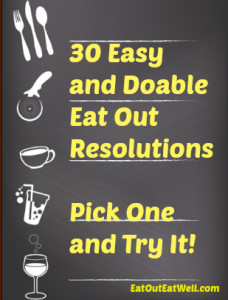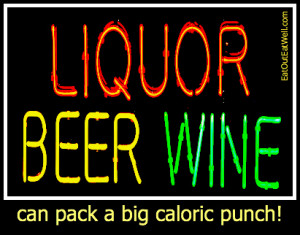 Are you tired of refusing to go out to eat because you’re on the new popular diet? Are you avoiding eating with your family because you don’t want to have the same tempting food?
Are you tired of refusing to go out to eat because you’re on the new popular diet? Are you avoiding eating with your family because you don’t want to have the same tempting food?
What about forming some healthy new habits that will help you steer clear of wacky diets and deprivation? Healthy new habits that will stick around for a while!
How Long Does It Take To Create A New Habit?
There are many factors that can affect the process, but essential for any change is doing a new behavior consistently and repetitively – which is also necessary for creating the neural connections in your brain that underlie the new habit.
We’ve been led to believe that forming a new habit takes between 21 and 28 days. Actually, there’s no solid evidence to support those numbers. The length of time it takes to form a habit is unique for each of us because of the factors that surround and influence our behavior.
In a study of habit formation published in the European Journal of Social Psychology, it took study participants 18 to 254 days, with an average of 66 days, to form their new habit. So, it could take a shorter amount of time – or it could take a lot longer — especially if you’re trying to form a new habit to displace one that’s multifaceted, that’s been around for a long time, or is a replacement for something that you love doing.
Work on one new habit at a time. Trying to create multiple new habits at the same time is confusing, difficult to do, and often ineffective. Your brain prefers simple and familiar rather than confusing and new so try not to overwhelm it with too many new behaviors at once.
The Steps
You’re ready to do what it takes to create a new habit. What do you do and how do you do it? Here’s the process:
- Describe, as specifically as possible, what you want to do. Instead of saying “I want to eat less,” identify how many calories or how many meals. Instead of saying “I’ll drink more water,” identify how many glasses you’ll drink a day.
- Write your new habit down. The most important thing is not that it’s inscribed but that writing it down reinforces it in your mind.
- Visualize the successful end result — like being in shape to run a 5K after creating new eating and workout habits. It might help to visualize yourself doing your new behavior and the results that will come from it.
- Enlist as much support and accountability as you can from people you know who will be willing to help – identify the naysayers and saboteurs and ignore or avoid them. Remember, you’re focusing on the positive end result, not on the problems you might encounter getting there.
- Buddy up with a friend who already has the habit you want to create. This serves as an accountability check and is also positive motivation. If you go to the gym with a friend who already has a habit of going to the gym it’s quite likely you will continue to go. Going with a friend who moans and whines about the gym and is ready to quit when the slightest breeze blows is not a likely predictor of success.
- Set up triggers to help cue the new action for your habit each and every time that you do it. Leave yourself notes, have a coworker remind you, put a rubber band on your wrist, set up roadblocks to temptation or to the vending machine down the hall from your office.
- Create a ritual around your new behavior – do the same thing every time and the same way each day so that it becomes second nature (and embedded in your brain’s hard wiring.) Habits are time and energy savers and brains like comfort. Doing the same thing the same way makes it nice and easy for your brain.
- Think of potential obstacles, animate or inanimate, and plan on how to deal with them. Make the desirable things easy to do and the “bad” things difficult to do. Remove temptation, i.e. throw out the junk food and don’t walk past the bakery with the tantalizing smells that waft onto the street.
- Take baby steps. It’s admirable to say that you want to walk for an hour each day. First work on getting out of bed early enough to fit in the time for exercise. Make it easy and leave your walking clothes in plain sight. Leave your running shoes where you’re likely to trip over them (don’t trip over them just make it hard to ignore them). Get out the door and commit to walking ten minutes each day. Hold yourself to the ten minutes, just do it every day until that part of the habit becomes embedded. Then build on it. Walk for 20 minutes, then thirty.
- Make positive choices. Each time you’re at a decision point as to whether or not to carry out the action for your new habit think about why you want to do it. Why is the new habit important, what is the long-term benefit, how great will you feel when you accomplish it? If you’re giving up an old space and time-taker-upper habit you need to replace that behavior with something else. If you’re trying to create a habit of not watching so much television what are you going to do with that time instead?
- Keep a visible reminder of your progress, no matter how big or small. Make graphs, use pictures, applaud each time you have fruit instead of cake for dessert, use a pedometer to calculate how many steps you walk each day. Yell hallelujah when your pants zip up without having to suck in your stomach. Positive feedback is essential.
- Anticipate imperfection. The road may be bumpy, so have a plan to regroup. If something in your action plan doesn’t work, reevaluate. If you really can’t get out of bed at 5:30 AM to exercise then stopping at the gym on the way home from work might be a better solution (hint: don’t go home first because it requires megamotivation to get back out to the gym). Your interest may start to wane in a couple of weeks or so into the new actions so keep your cues and triggers in place to remind you to stick with it.
- Be confident. Believe that you can achieve what you have set out to do. Celebrate all your achievements no matter how big or small.



